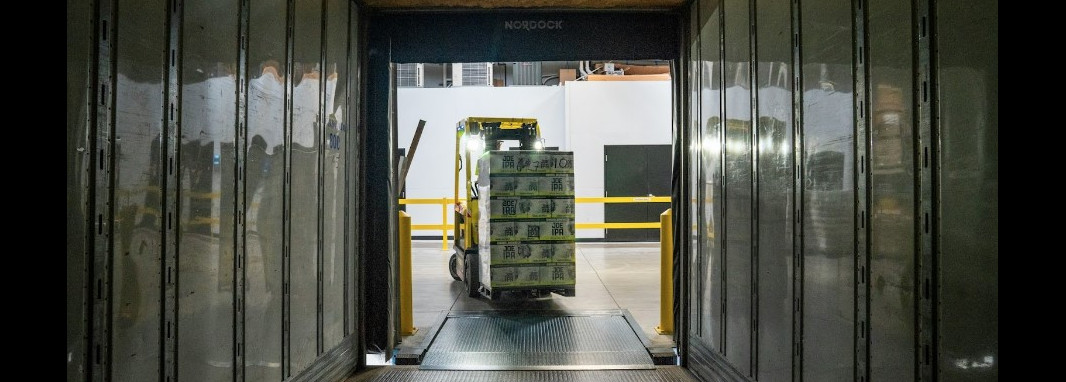Managing inventory efficiently is a prerequisite for a successful business. Keeping track of your stock, predicting your needs, and making timely decisions can assist you in standing out from your competitors.
Using the right tools allows you to anticipate sales, look after suppliers and other associates, manage multiple locations at once, and support your business as it grows.
Having a reliable inventory management system means saving time and financial resources, by helping you avoid having to deal with overstocking or inventory shortage problems. Eventually, you’ll end up with satisfied customers coming from proper inventory work because they’re getting the right items on time.
Join us while we walk through the eight parts of superb inventory management solutions. You’ll find ways to make your business better and grow stronger.
Understanding inventory management
Inventory management means keeping track of what is stocked in your store or warehouse. It ensures that you know how many items you have in your inventory and what they’re worth.
Dedicated inventory software helps you follow each item from its intake into your system until it leaves your premises. Thus, you can make smarter choices about ordering new products and saving in the process.
Having the right stock available to your customers at the right moment, without spending a fortune is a sign of smart inventory control. It involves checking stock levels, knowing what sells well, and when to get new products so you don’t run out.
Key components of leading inventory management solutions
Finding the right stock inventory management solution can change how you run your business. A top-notch tool comes packed with features that keep your stock in check and help fulfill orders efficiently - way beyond just counting what’s on shelves.
You get real-time updates, alerts when it’s time to reorder and insights into how well items are selling across different locations. It connects with suppliers and manages them, predicts demand, oversees all orders centrally, and scales as you grow.
Real-time inventory tracking
Real-time inventory tracking lets you see what items you have at the moment, and their location, at any moment. This tool helps you avoid selling products that aren’t in stock.
With real-time tracking, making promises to customers becomes seamless because you know exactly what’s available.
This way, if an item is running low or out of stock, you can act fast. No more guessing games or unhappy customers. Plus, it saves time by updating instantly - no need for manual counts.
Reorder alerts
Reorder alerts save you from running out of stock. They notify you when it’s time to order a new batch before you run low.
You set the rules for when to get these alerts. For example, if you have a popular item, you might want alerts when its stock drops below 50 units.
Barcode scanning
Barcode scanning makes checking products in and out simple. You use a device to quickly read barcodes on items. This helps you be aware of what you have at hand and what stock sells fast.
With barcode scanning, your inventory counts update right away. No need to count by hand or guess if you’re running low on something, meaning less time spent checking stock and more for other tasks. Also, it’s fairly straightforward for anyone to learn and use, making training new staff quick and painless.
Detailed reporting and analytics
Reporting and analytics provide a clear picture of your inventory, by showing trends, sales, and item performance. This helps you make informed decisions about your stock.
With reports and analytics software, you get to see detailed reports on how fast items sell, which products bring in the most revenue, and where you might be hemorrhaging money.
With these tools, managing your stock becomes straightforward, as you have insights backed with numbers that tell you when to order more goods and cut down on others. These reports also help spot issues early on, allowing you to tend to them before they get out of hand.
Multi-location management
Managing inventory across multiple locations can be tricky. You need a system that keeps track of stock in all places simultaneously. If you sell a product in one location, the system updates everywhere else; sort of like having eyes on every shelf, without being there.
Some systems let you observe everything from one screen, and transfer items between locations effortlessly, saving you time and reducing errors.
Demand forecasting
Demand forecasting is a superb aid in guessing how much inventory you’ll end up selling. This way, you can ensure you’ll have just enough stock without overloading. It uses past sales data to predict future sales. Tools for demand forecasting use old metrics and trends to make smart guesses about future needs.
Having the right amount of stock is crucial. Too much, and you’ll waste money on storage. Too little, and your customers might get upset because of a lack of their desired products. So, forecasting lets you strike a balance by predicting how popular an item might be.
Centralized order management
With centralized order management, you simplify the process of keeping track of orders from start to finish. You can observe all your orders in one place, no matter where they come from, allowing you to make less confusion and fewer mistakes.
There’s no need for jumping between systems or screens since everything is available in one centralized software.
These systems let you work faster and smarter. You can update order status, track shipping, and handle returns without hassle. They save time and effort, making sure customers get what they ordered exactly on schedule.
Growth readiness
Growth readiness in inventory management means you can handle more orders and items than you were before without any hiccups. Your system must be able to grow with your business. This includes managing a larger quantity of products, dealing with more suppliers, and selling at new locations.
You need a solution that adjusts quickly to new challenges. This ensures that you don’t fall behind as your business expands.
A solid system lets you add new features or tools when you predict a need for them. For example, if you start selling your goods online or open another store, the system should support these changes seamlessly.
Benefits of effective inventory management
Effective inventory management is critical to the steady flow of your business operations. It not only helps reduce costs but also provides customer satisfaction. Here are the four main benefits:
Enhanced efficiency
Efficient inventory management allows your business to streamline its processes, and save time by knowing exactly what you have and where it’s located. You’ll save time by making fewer mistakes like selling out-of-stock items.
It also speeds up order fulfillment - when everything’s perfectly organized, picking and packing are much faster.
With these systems, team collaboration improves too. By having access to real-time updates, everyone knows what needs to be reordered or which items are flying off the shelves. This keeps your business moving forward without delays or confusion.
Improved accuracy
Inventory mistakes are greatly reduced with proper management. Knowing exactly what you’re equipped with cuts down on errors in order fulfillment. A system that tracks everything in real time ensures accurate stock counts.
It also ensures orders are complete and on time, which results in fewer returns and complaints because the items sent match the order.
Less guesswork means clear stock levels, allowing you to make informed decisions about when and how much to order.
Cost reduction
Cutting costs is a major benefit of effective inventory management. By maintaining the right stock levels, you avoid losing sales from understocking or the expense of overbuying.
This balance means your cash isn’t tied up in excessive products sitting in storage.
You save on storage costs as well. Less time spent managing inventory means more time focusing on growing your business. Smart planning can cut down on wasted space and reduce the need for extra warehouse space.
Better customer service
Solid inventory management leads to excellent customer service, which keeps customers coming back. Inventory management helps you know exactly what’s in stock, so you can quickly tend to your customers’ inquiries.
If a customer requires items that are out of stock, the system notifies you when those will be available again. This way, you can provide clear answers and keep your promises about delivery times.
Speed up processes - keep your customers coming back
Inventory management solutions excel at tracking stock, letting you know when to reorder, and managing orders from multiple locations without any issues. This reduces guesswork and frees up more time to give your business more attention.
With the right tools at your fingertips, keeping your customers happy is effortless, and excess costs can be considerably cut.
Effectively managed inventory will set your business up for long-term success.






